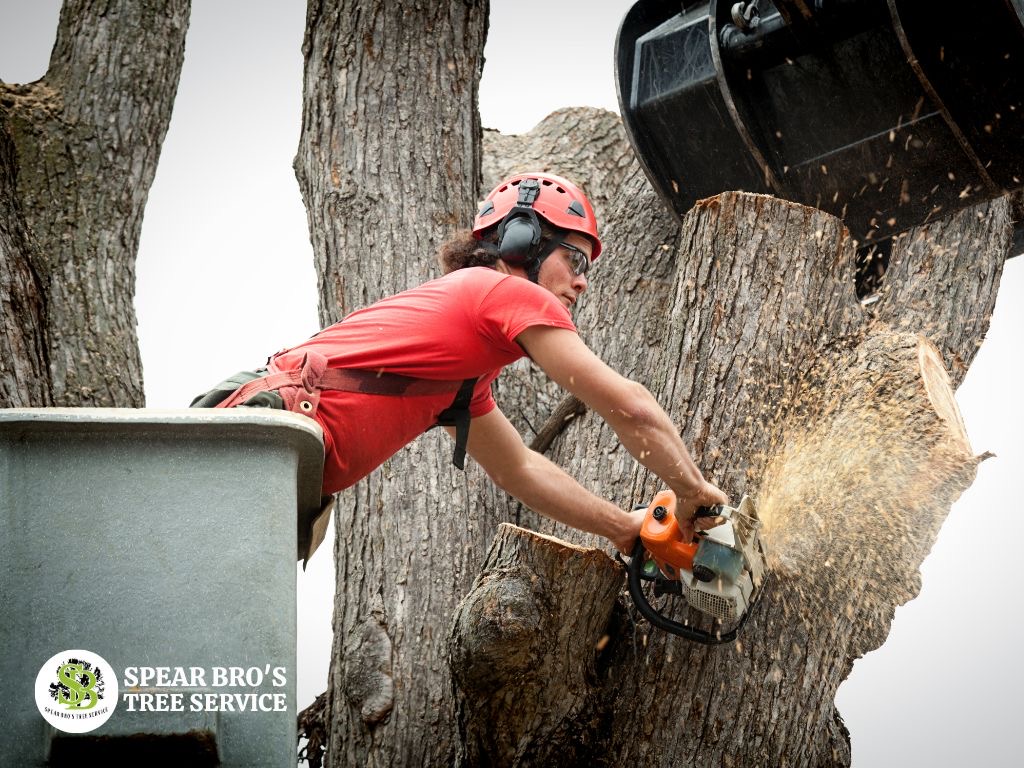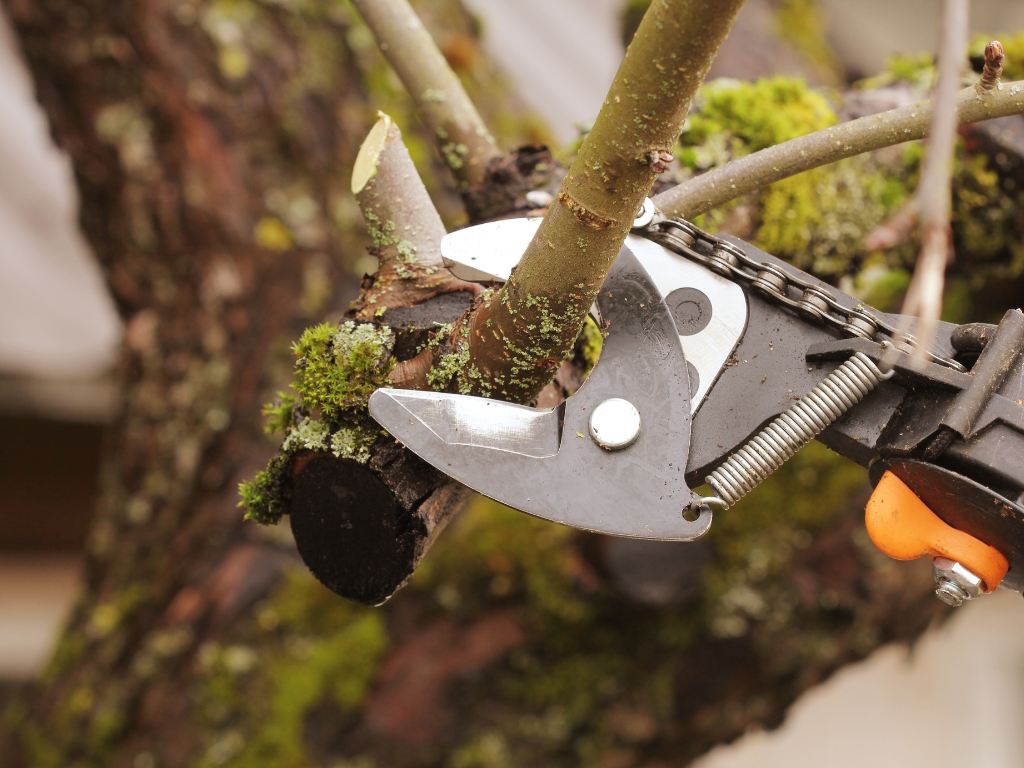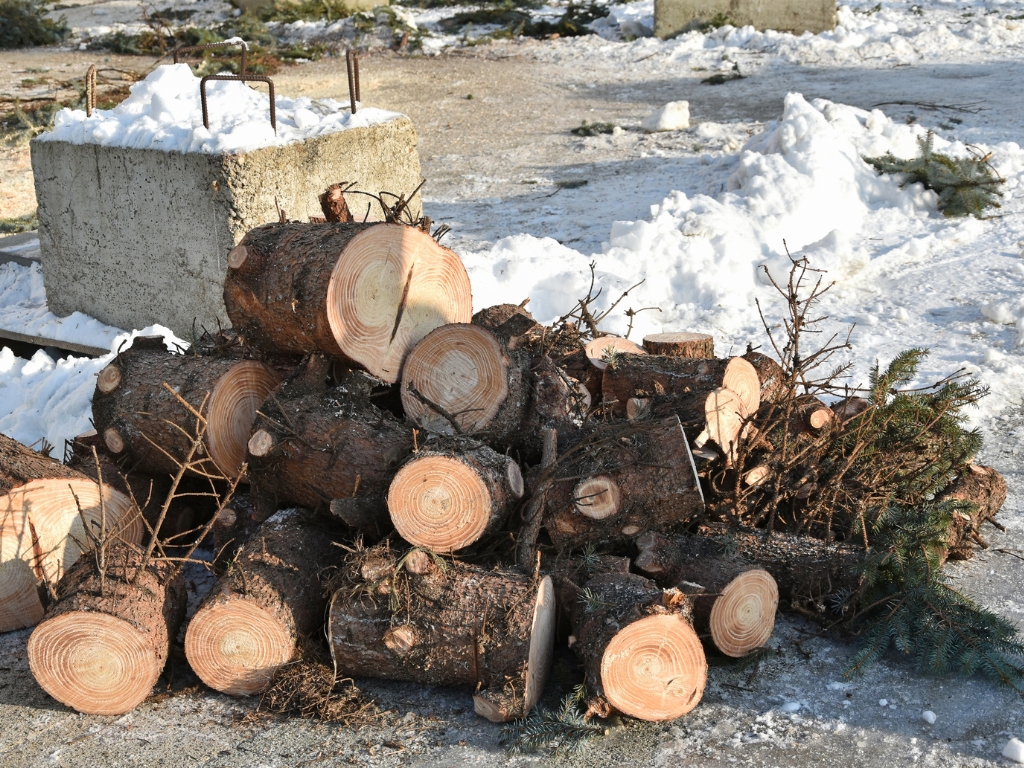As a business owner, unexpected tree emergencies can disrupt operations, damage your property, and even pose safety risks to employees and customers.
Whether it’s fallen trees due to high winds or storm damage impacting your commercial space, knowing how to respond quickly is crucial to minimizing further damage and ensuring everyone’s safety.
Let us walk you through the essential steps for handling emergency tree removal efficiently, helping you protect your investment and maintain a safe environment for your business.
Quick View
Step 1: Assess the situation safely.
Step 2: Contact a professional tree removal service immediately.
Step 3: Document the damage for insurance claims.
Step 4: Clear the surrounding area and secure the premises.
Step 5: Check for structural damage to buildings and facilities.
Step 6: Be prepared for power outages or utility disruptions.
Step 7: Implement preventative measures for future emergencies.
Step 1: Assess the Situation Safely
When faced with an unexpected tree emergency, the first step is to assess the situation carefully. Fallen trees or damaged trees caused by storms, high winds, or even hurricanes can create significant risks to your property.
Take a step back and observe the area from a safe distance, checking for hazards such as power lines, broken branches, or damage to your house or yard.
If storm damage has caused tree damage around your business, it’s crucial to identify whether the fallen or damaged trees pose a threat to your team, customers, or any nearby structures. This helps ensure everyone’s safety before further actions are taken.
Be mindful of potential dangers like dead limbs, broken branches, or dangling trees that could fall unexpectedly.
💡 Pro Tip: Use binoculars or a zoom camera to safely inspect high or hard-to-reach areas of the tree for hidden damage, rather than risking close contact. Always reach out to emergency tree removal services if you notice any danger.
Step 2: Contact a Tree Removal Service Immediately
After assessing the situation, the next step is to contact a professional tree service company that offers emergency tree services.
It’s essential to choose tree companies that have the best equipment and experienced certified arborists who can safely remove the tree, especially in situations involving storm damaged trees.
Professional emergency tree service providers use specialized equipment to handle tree removals efficiently, whether it’s for residential or commercial properties.
Look for a fully licensed and insured company that specializes in emergency tree removal in your area.
Step 3: Document the Damage for Insurance Claims
It’s important to document all aspects of the tree damage as soon as possible. This will make the insurance claim process smoother and help you get compensated for any tree work required.
Take clear photos of the fallen, broken, or storm damaged trees, including any remaining wood, debris, and limb damage.
Make sure to capture images of the impact on your property, such as damaged structures, landscaping, and any branch or fruit trees affected by the storm.
This documentation serves as proof when you’re filing an insurance claim and helps tree removal services understand the extent of the job required.
💡 Pro Tip: Keep a record of the date and event that caused the tree emergency to strengthen your insurance claim and ensure faster processing.
Step 4: Clear the Surrounding Area and Secure the Premises
Once the tree removal professionals arrive, ensure that the surrounding area is clear. Place barriers around the affected zone to keep your team and customers safe from any risk posed by tree damage or falling branches.
This is particularly important in emergencies involving commercial properties, where pedestrian traffic might be higher.
A professional tree service company will handle tasks like stump grinding, storm cleanup, and pruning, leaving your yard or business premises in better condition.
Their certified arborists will take care of any remaining wood, dead shrubs, or debris, ensuring the health and longevity of your surrounding landscaping.
💡 Pro Tip: Consider placing warning signs around the damaged area, especially if you expect a delay before the professionals arrive, to prevent accidental access by staff or visitors.
Step 5: Check for Structural Damage to Buildings and Facilities
After experiencing extreme weather events like high winds, hurricanes, or heavy storms, it’s crucial to inspect your commercial property for any signs of tree damage.
Fallen trees and broken branches can impact your house, office building, or other structures, causing safety hazards that need immediate attention.
Look for cracks, dents, or impact marks on the building’s exterior, especially if fallen or damaged trees made contact with the roof, walls, or windows.
Don’t forget to check for any damage to shrubs, fruit trees, or other landscaping elements, as they could also pose a risk to your premises.
If there’s any suspicion of structural issues, contact a professional right away.
Step 6: Be Prepared for Power Outages or Utility Disruptions
Fallen trees often take down power lines, leading to electrical outages or disruptions in utility services. These issues can halt your business operations and pose a safety hazard for your team and customers.
In these cases, it’s essential to have an emergency tree service handle the tree work around the power lines to avoid further complications.
Consider investing in backup solutions like generators to maintain operations during outages. Additionally, reaching out to tree companies that specialize in emergency tree removal services will ensure the tree is removed quickly and safely, restoring access to essential utilities.
💡 Tip: Invest in surge protectors and an uninterruptible power supply (UPS) system for essential equipment, ensuring that power outages from fallen trees won’t cause data loss or equipment damage.
Step 7: Implement Preventative Measures for Future Emergencies
To minimize the impact of tree emergencies on your business, take proactive steps to preserve the health and longevity of the trees on your property.
Regular maintenance, such as pruning, stump grinding, and checking for signs of dead or damaged trees, can help prevent issues before they arise.
Consider partnering with a licensed arborists team to inspect and maintain your trees throughout the year. Regular maintenance from a fully licensed and insured professional tree service company ensures your property is better protected.
💡 Preventative Tips
- Schedule regular inspections with certified arborists to monitor the health of your trees.
- Remove any broken, dying, or dead limbs to avoid potential storm damage.
- Invest in storm cleanup services after hurricanes or severe weather to clear away debris and fallen branches.
Final Thoughts
Handling a tree emergency swiftly and effectively can make all the difference in protecting your commercial property and avoiding costly repairs or downtime. By following these tips, you’ll be better prepared to respond to fallen or damaged trees and ensure your business remains secure.
Need professional assistance? Contact Spear Bro’s Tree Service today for reliable, fast, and efficient tree removal solutions. Our team of experts is ready to help you handle any tree emergency and keep your business safe.
As a business owner, unexpected tree emergencies can disrupt operations, damage your property, and even pose safety risks to employees and customers.
Whether it’s fallen trees due to high winds or storm damage impacting your commercial space, knowing how to respond quickly is crucial to minimizing further damage and ensuring everyone’s safety.
Let us walk you through the essential steps for handling emergency tree removal efficiently, helping you protect your investment and maintain a safe environment for your business.
Quick View
Step 1: Assess the situation safely.
Step 2: Contact a professional tree removal service immediately.
Step 3: Document the damage for insurance claims.
Step 4: Clear the surrounding area and secure the premises.
Step 5: Check for structural damage to buildings and facilities.
Step 6: Be prepared for power outages or utility disruptions.
Step 7: Implement preventative measures for future emergencies.
Step 1: Assess the Situation Safely
When faced with an unexpected tree emergency, the first step is to assess the situation carefully. Fallen trees or damaged trees caused by storms, high winds, or even hurricanes can create significant risks to your property.
Take a step back and observe the area from a safe distance, checking for hazards such as power lines, broken branches, or damage to your house or yard.
If storm damage has caused tree damage around your business, it’s crucial to identify whether the fallen or damaged trees pose a threat to your team, customers, or any nearby structures. This helps ensure everyone’s safety before further actions are taken.
Be mindful of potential dangers like dead limbs, broken branches, or dangling trees that could fall unexpectedly.
💡 Pro Tip: Use binoculars or a zoom camera to safely inspect high or hard-to-reach areas of the tree for hidden damage, rather than risking close contact. Always reach out to emergency tree removal services if you notice any danger.
Step 2: Contact a Tree Removal Service Immediately
After assessing the situation, the next step is to contact a professional tree service company that offers emergency tree services.
It’s essential to choose tree companies that have the best equipment and experienced certified arborists who can safely remove the tree, especially in situations involving storm damaged trees.
Professional emergency tree service providers use specialized equipment to handle tree removals efficiently, whether it’s for residential or commercial properties.
Look for a fully licensed and insured company that specializes in emergency tree removal in your area.
Step 3: Document the Damage for Insurance Claims
It’s important to document all aspects of the tree damage as soon as possible. This will make the insurance claim process smoother and help you get compensated for any tree work required.
Take clear photos of the fallen, broken, or storm damaged trees, including any remaining wood, debris, and limb damage.
Make sure to capture images of the impact on your property, such as damaged structures, landscaping, and any branch or fruit trees affected by the storm.
This documentation serves as proof when you’re filing an insurance claim and helps tree removal services understand the extent of the job required.
💡 Pro Tip: Keep a record of the date and event that caused the tree emergency to strengthen your insurance claim and ensure faster processing.
Step 4: Clear the Surrounding Area and Secure the Premises
Once the tree removal professionals arrive, ensure that the surrounding area is clear. Place barriers around the affected zone to keep your team and customers safe from any risk posed by tree damage or falling branches.
This is particularly important in emergencies involving commercial properties, where pedestrian traffic might be higher.
A professional tree service company will handle tasks like stump grinding, storm cleanup, and pruning, leaving your yard or business premises in better condition.
Their certified arborists will take care of any remaining wood, dead shrubs, or debris, ensuring the health and longevity of your surrounding landscaping.
💡 Pro Tip: Consider placing warning signs around the damaged area, especially if you expect a delay before the professionals arrive, to prevent accidental access by staff or visitors.
Step 5: Check for Structural Damage to Buildings and Facilities
After experiencing extreme weather events like high winds, hurricanes, or heavy storms, it’s crucial to inspect your commercial property for any signs of tree damage.
Fallen trees and broken branches can impact your house, office building, or other structures, causing safety hazards that need immediate attention.
Look for cracks, dents, or impact marks on the building’s exterior, especially if fallen or damaged trees made contact with the roof, walls, or windows.
Don’t forget to check for any damage to shrubs, fruit trees, or other landscaping elements, as they could also pose a risk to your premises.
If there’s any suspicion of structural issues, contact a professional right away.
Step 6: Be Prepared for Power Outages or Utility Disruptions
Fallen trees often take down power lines, leading to electrical outages or disruptions in utility services. These issues can halt your business operations and pose a safety hazard for your team and customers.
In these cases, it’s essential to have an emergency tree service handle the tree work around the power lines to avoid further complications.
Consider investing in backup solutions like generators to maintain operations during outages. Additionally, reaching out to tree companies that specialize in emergency tree removal services will ensure the tree is removed quickly and safely, restoring access to essential utilities.
💡 Tip: Invest in surge protectors and an uninterruptible power supply (UPS) system for essential equipment, ensuring that power outages from fallen trees won’t cause data loss or equipment damage.
Step 7: Implement Preventative Measures for Future Emergencies
To minimize the impact of tree emergencies on your business, take proactive steps to preserve the health and longevity of the trees on your property.
Regular maintenance, such as pruning, stump grinding, and checking for signs of dead or damaged trees, can help prevent issues before they arise.
Consider partnering with a licensed arborists team to inspect and maintain your trees throughout the year. Regular maintenance from a fully licensed and insured professional tree service company ensures your property is better protected.
💡 Preventative Tips
- Schedule regular inspections with certified arborists to monitor the health of your trees.
- Remove any broken, dying, or dead limbs to avoid potential storm damage.
- Invest in storm cleanup services after hurricanes or severe weather to clear away debris and fallen branches.
Final Thoughts
Handling a tree emergency swiftly and effectively can make all the difference in protecting your commercial property and avoiding costly repairs or downtime. By following these tips, you’ll be better prepared to respond to fallen or damaged trees and ensure your business remains secure.
Need professional assistance? Contact Spear Bro’s Tree Service today for reliable, fast, and efficient tree removal solutions. Our team of experts is ready to help you handle any tree emergency and keep your business safe.





